
Wiślica: The Hidden Gem of Poland's History
Discover Wiślica: A historic town in southern Poland, rich in ancient architecture, cultural heritage, and serene landscapes. Ideal for history buffs and peaceful retreats.
Wiślica, a small town in southern Poland, is a treasure trove of history and culture. Often overlooked by tourists, this charming destination offers a unique glimpse into Poland's past. Nestled in the Świętokrzyskie Voivodeship, Wiślica is home to a stunning array of historical sites, including the oldest church floor in Poland, dating back to the 12th century. The Romanesque architecture and ancient artifacts found in Wiślica tell the story of Poland's early Christian history. One of the town's most notable landmarks is the Collegiate Church of the Birth of the Blessed Virgin Mary. This Gothic church, built in the 14th century, is adorned with beautiful frescoes and a unique stone baptismal font. Visitors can also explore the Wiślica Archaeological Museum, which houses a fascinating collection of artifacts from the prehistoric to medieval periods. The underground crypts beneath the museum offer an intriguing journey into the town's past. Wiślica is not just about history; it also boasts picturesque landscapes and a serene atmosphere. The town is situated near the Nida River, providing opportunities for leisurely walks and scenic views. For those interested in local traditions, Wiślica hosts various cultural events throughout the year, where visitors can experience traditional Polish music, dance, and cuisine. Whether you're a history buff or simply looking for a peaceful retreat, Wiślica is a destination that promises to leave a lasting impression.
Local tips in Wiślica
- Visit the Collegiate Church early in the morning to avoid crowds and enjoy the frescoes in peace.
- Check the schedule for local cultural events and festivals to experience traditional Polish culture.
- Explore the underground crypts at the Wiślica Archaeological Museum for a unique historical experience.
- Take a walk along the Nida River for scenic views and a relaxing atmosphere.
Wiślica: The Hidden Gem of Poland's History
Wiślica, a small town in southern Poland, is a treasure trove of history and culture. Often overlooked by tourists, this charming destination offers a unique glimpse into Poland's past. Nestled in the Świętokrzyskie Voivodeship, Wiślica is home to a stunning array of historical sites, including the oldest church floor in Poland, dating back to the 12th century. The Romanesque architecture and ancient artifacts found in Wiślica tell the story of Poland's early Christian history. One of the town's most notable landmarks is the Collegiate Church of the Birth of the Blessed Virgin Mary. This Gothic church, built in the 14th century, is adorned with beautiful frescoes and a unique stone baptismal font. Visitors can also explore the Wiślica Archaeological Museum, which houses a fascinating collection of artifacts from the prehistoric to medieval periods. The underground crypts beneath the museum offer an intriguing journey into the town's past. Wiślica is not just about history; it also boasts picturesque landscapes and a serene atmosphere. The town is situated near the Nida River, providing opportunities for leisurely walks and scenic views. For those interested in local traditions, Wiślica hosts various cultural events throughout the year, where visitors can experience traditional Polish music, dance, and cuisine. Whether you're a history buff or simply looking for a peaceful retreat, Wiślica is a destination that promises to leave a lasting impression.
When is the best time to go to Wiślica?
Iconic landmarks you can’t miss
Archaeological Museum Wiślica
Unveil the Secrets of Poland's Past at the Archaeological Museum Wiślica - A Must-Visit National Museum in the Heart of Wiślica.

Rynek Miejski w Wiślicy
Explore the historic Rynek Miejski w Wiślicy, a vibrant town square filled with rich culture, stunning architecture, and local charm in Poland.

Długosza House in Wiślica
Uncover the historical treasures of Poland at Długosza House, a museum dedicated to the life and times of Jan Długosz in the enchanting town of Wiślica.

Grodzisko w Wiślicy
Explore Grodzisko w Wiślicy, a medieval historical landmark that reveals Poland's rich heritage amidst serene landscapes and captivating stories.
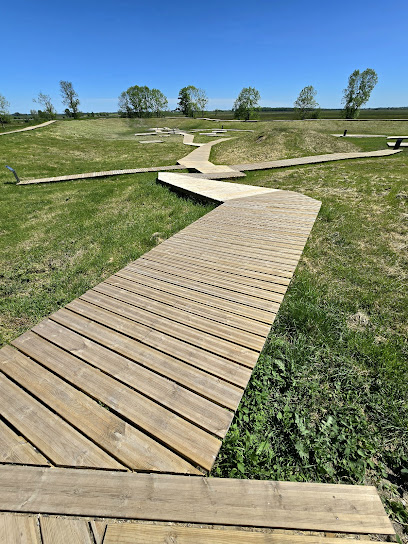
Plac Solny
Experience the historic charm and vibrant culture of Plac Solny in Wiślica, a must-visit monument for travelers seeking authentic Polish heritage.

Dzwonnica wolnostojąca
Explore the Dzwonnica wolnostojąca in Wiślica, a stunning historical bell tower that reflects Poland's rich culture and architectural elegance.

Pawilon Archeologiczny z pozostałościami romańskiego kościoła św. Mikołaja z XI wieku
Uncover the rich history of Poland at the Pawilon Archeologiczny, home to the ruins of an 11th-century Romanesque church in Wiślica.
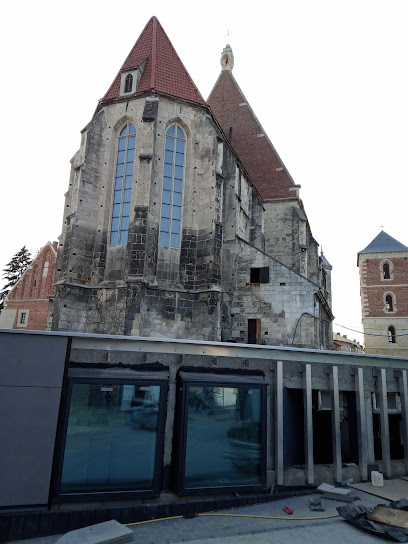
Kamienica Różańcowa
Explore the architectural beauty and rich history of Kamienica Różańcowa, a must-see Gothic landmark in the charming town of Wiślica, Poland.

Unmissable attractions to see
Zagroda Felicji Curyłowej w Zalipiu, Filia Muzeum Etnograficznego w Tarnowie
Explore the vibrant folk culture of Poland at Zagroda Felicji Curyłowej in Zalipiu, where traditional art and rural life come alive.

Rynek Główny w Tarnowie
Experience the vibrant heart of Tarnów at Rynek Główny, where history, culture, and charming architecture come together.

Archaeological Museum Wiślica
Explore the rich history of Poland at the Archaeological Museum Wiślica, a captivating national museum filled with ancient artifacts and engaging exhibits.

Rynek Miejski w Wiślicy
Discover the enchanting Rynek Miejski in Wiślica, a historic market square steeped in culture and charm, perfect for exploring Poland's rich heritage.
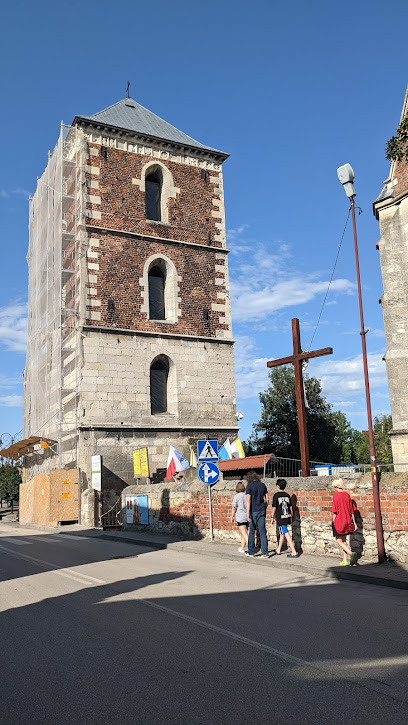
Collegiate Basilica of the Birth of the Blessed Virgin Mary, Wiślica
Explore the Gothic beauty and spiritual heritage of the Collegiate Basilica in Wiślica, an architectural gem steeped in history and tranquility.

Rezerwat przyrody Przęślin
Explore the tranquil landscapes of Rezerwat przyrody Przędlin, a nature preserve in Wiślica, perfect for outdoor enthusiasts and wildlife lovers.

Długosza House in Wiślica
Explore Poland's rich history at Długosza House in Wiślica, a captivating museum filled with artifacts and engaging exhibits that tell fascinating stories.

Grodzisko w Wiślicy
Explore Grodzisko w Wiślicy, a historical landmark in Poland that offers a glimpse into medieval life amidst stunning natural beauty.

Plac Solny
Experience the historical charm and vibrant culture of Plac Solny in Wiślica, a serene monument surrounded by beautiful architecture and lush landscapes.

Strefa ciszy ...
Discover tranquility at Strefa Ciszy, a unique tourist attraction in Poland, perfect for relaxation and immersive nature experiences.

Dzwonnica wolnostojąca
Explore the Dzwonnica Wolnostojąca, a historic bell tower in Wiślica, Poland, embodying medieval architecture and local cultural heritage.

dawny kościół i szpital pw. Ducha Świętego
Discover the historic Spirit of the Holy Ghost Church and Hospital in Wiślica, a serene blend of spirituality and architectural beauty.

Kamienica Różańcowa
Discover the historic Kamienica Różańcowa in Wiślica, Poland, a stunning example of medieval architecture and cultural heritage.

Zalipie
Discover the vibrant artistry of Zalipie, Poland's enchanting painted village filled with colorful houses and rich folk traditions.

Zalipie 135
Discover the vibrant painted village of Zalipie, where colorful floral designs on homes create a magical atmosphere in the heart of Poland.

Essential places to dine
Zajazd Kasztelanski
Discover the authentic taste of Poland at Zajazd Kasztelanski, where traditional dishes meet warm hospitality in a charming setting.

bistro Wiślica ZLIKWIDOWANO
Experience authentic Polish cuisine in a cozy bistro setting in scenic Wiślica – where every dish tells a story.

raBARbar
Experience the lively atmosphere at raBARbar in Wiślica – where great drinks meet delicious fast food in a vibrant setting.

Markets, malls and hidden boutiques
Dino
Explore Dino Supermarket in Wiślica for a taste of local flavors and convenient shopping during your travels in Poland.

Delikatesy Centrum
Explore the rich flavors of Polish cuisine at Delikatesy Centrum in Wiślica, a gourmet grocery store offering local delicacies and fresh produce.

Biedronka
Discover Biedronka in Wiślica, your go-to discount supermarket for local groceries, snacks, and unique Polish products.

Sklep Chemiczno-Przemysłowy Mirosław Biskup
Discover the lush offerings at Sklep Chemiczno-Przemysłowy Mirosław Biskup, Wiślica's premier garden center for all your horticultural endeavors.

Tradycja i Smak Lody Bałaga- Wytwórnia Lodów.
Discover the artisanal delights of Tradycja i Smak Lody Bałaga, a charming ice cream shop in Wiślica, where every scoop is a taste of tradition.

KWIACIARNIA ABRATAŃSKA HALINA
Discover Kwiaciarnia Abratańska Halina in Wiślica – a floral paradise offering exquisite arrangements and local blooms for every occasion.
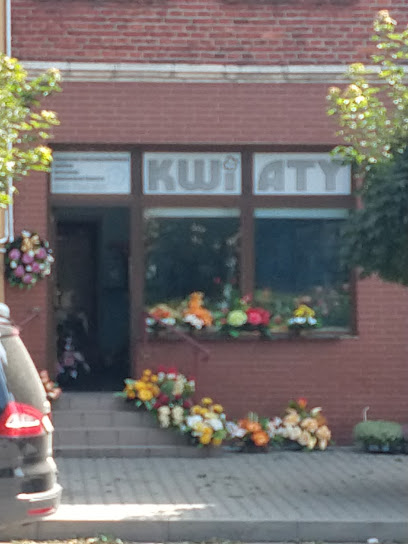
Pod Telegrafem. Piekarnia
Experience the taste of tradition at Pod Telegrafem Bakery in Wiślica, a must-visit for delicious Polish pastries and bread.

Kolporter
Explore Kolporter, the quaint newsstand in Wiślica, offering a diverse selection of Polish and international publications for every traveler.

Anmar. Księgarnia
Discover Anmar. Księgarnia in Wiślica, a charming book store with a curated collection of literature and a vibrant local literary scene.

Zychowicz
Discover Zychowicz in Wiślica, where tradition meets flavor with premium local meats and a warm, welcoming atmosphere.

Obuwie
Discover quality footwear at Obuwie in Wiślica, where local craftsmanship meets stylish design for every occasion.

Sklep ze sprzętem RTV i AGD
Explore the best of home appliances at Sklep ze sprzętem RTV i AGD in Wiślica, where quality meets exceptional service.
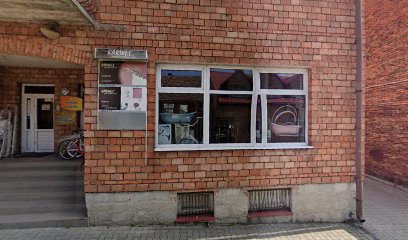
Zwolska S. Sklep z art. nasienno - chemicznymi
Discover the best seeds and gardening supplies at Zwolska S. in Wiślica, Poland, where green thumbs thrive and local charm flourishes.

Sklepik z pamiątkami
Discover unique souvenirs and local crafts in the charming Sklepik z pamiątkami, nestled in the historic square of Wiślica.

Trendy
Discover the latest fashion trends at Trendy, a stylish clothing store in the heart of Wiślica, Poland, perfect for your shopping spree.

Essential bars & hidden hideouts
Zajazd Kasztelanski
Discover the culinary delights at Zajazd Kasztelanski, a charming bar and restaurant in Gorysławice, perfect for unwinding and enjoying local flavors.

raBARbar
Experience the vibrant atmosphere and delectable fast food at raBARbar in the heart of Wiślica, a perfect stop for tourists seeking local flavors.

Local Phrases about Wiślica
-
- HelloCześć
[cheshch] - GoodbyeDo widzenia
[do veedzenia] - YesTak
[tak] - NoNie
[nye] - Please/You're welcomeProszę
[proshe] - Thank youDziękuję
[dzyenkoo-yeh] - Excuse me/SorryPrzepraszam
[pzheprasham] - How are you?Jak się masz?
[yak sheh mahsh?] - Fine. And you?Dobrze. A ty?
[dobzheh. ah ti?] - Do you speak English?Czy mówisz po angielsku?
[chi moovish poh ahngyelskoo?] - I don't understandNie rozumiem
[nye rozoomyem]
- HelloCześć
-
- I'd like to see the menu, pleaseChciałbym zobaczyć menu, proszę
[hchyalbim zobachichh menu, prosheh] - I don't eat meatNie jem mięsa
[nye yem myensa] - Cheers!Na zdrowie!
[nah zdrovyeh] - I would like to pay, pleaseChciałbym zapłacić, proszę
[hchyalbim zapwachich, prosheh]
- I'd like to see the menu, pleaseChciałbym zobaczyć menu, proszę
-
- Help!Pomocy!
[pomotsih] - Go away!Idź precz!
[idgeh pretch] - Call the Police!Zadzwoń po policję!
[zadzvon' poh politsyeh] - Call a doctor!Zadzwoń po lekarza!
[zadzvon' poh lekarza] - I'm lostZgubiłem się
[zgoobeewem shyeh] - I'm illJestem chory
[yestem hory]
- Help!Pomocy!
-
- I'd like to buy...Chciałbym kupić...
[hchyalbim koopeech] - I'm just lookingTylko się rozglądam
[tilko shyeh rozhwahndam] - How much is it?Ile to kosztuje?
[eeleh to koshtoo-yeah] - That's too expensiveTo jest za drogie
[to yest za drog'yeh] - Can you lower the price?Czy możesz obniżyć cenę?
[chi moosheh obneeyoontch cheneh]
- I'd like to buy...Chciałbym kupić...
-
- What time is it?Która jest godzina?
[kwotrah yest gojzheenah] - It's one o'clockJest pierwsza
[yest pyervshah] - Half past (10)Jest wpół do (10)
[yest vpoow doh] - MorningRano
[rahno] - AfternoonPopołudnie
[popowoodnyeh] - EveningWieczór
[vyechor] - YesterdayWczoraj
[vchoray] - TodayDzisiaj
[dzyseeay] - TomorrowJutro
[yootro] - 1Jeden
[yedehn] - 2Dwa
[dvah] - 3Trzy
[tshih] - 4Cztery
[chterih] - 5Pięć
[pyentch] - 6Sześć
[sheshch] - 7Siedem
[shyedem] - 8Osiem
[oshyem] - 9Dziewięć
[dzyevnyehtch] - 10Dziesięć
[dzyesyeahntch]
- What time is it?Która jest godzina?
-
- Where's a/the...?Gdzie jest...
[gdzyeh yest] - What's the address?Jaki jest adres?
[yakee yest ahdress] - Can you show me (on the map)?Czy możesz mi pokazać (na mapie)?
[chi moosheh mee pohkazach (nah mahpyeh)] - When's the next (bus)?Kiedy jest następny (autobus)?
[kyehdy yest nahstepny (aowtohboos)] - A ticket (to ....)Bilet (do ....)
[beelet (do ....)]
- Where's a/the...?Gdzie jest...
History of Wiślica
-
Wiślica, one of Poland's oldest towns, was founded in the early Middle Ages. It is believed to have been established in the 9th century by the Slavic tribe of the Vistulans. The town's strategic location along the Vistula River made it an important hub for trade and defense.
-
During the 10th century, Wiślica came under the control of the Piast dynasty. It became a significant administrative and religious center. The town's prominence is reflected in the construction of the Romanesque collegiate church of St. Nicholas, commissioned by Prince Henry the Bearded in the early 13th century.
-
In 1135, Wiślica was the site of a significant battle between the forces of High Duke Bolesław III Wrymouth and the Bohemian Duke Soběslav I. The battle was part of a larger conflict over control of the Polish territories. The victory of Bolesław III solidified his rule and secured Wiślica as a stronghold in the region.
-
In the 14th century, Wiślica saw the construction of its most iconic structure, the Gothic-style collegiate church of the Nativity of the Blessed Virgin Mary. Commissioned by King Casimir III the Great, the church features stunning architectural details and houses the famous Wiślica Frescoes, depicting scenes from the life of the Virgin Mary.
-
In 1347, King Casimir III the Great issued the Wiślica Statutes, a set of legal codes that aimed to standardize laws across the Kingdom of Poland. These statutes were recited and enforced in Wiślica, emphasizing the town's importance as a judicial center. They played a crucial role in the development of Polish law and governance.
-
During the Renaissance, Wiślica continued to flourish as a cultural and intellectual center. The town attracted scholars and artists, contributing to the broader European Renaissance movement. The Wiślica Academy, founded in the 16th century, became a renowned institution for learning and research.
-
In the 19th and 20th centuries, Wiślica underwent significant changes. It faced challenges during the partitions of Poland and both World Wars. Despite these hardships, the town preserved its historical heritage. Today, Wiślica stands as a testament to Poland's rich history, with its remarkable architecture and cultural landmarks attracting visitors from around the world.
Wiślica Essentials
-
Wiślica is a small town located in the Świętokrzyskie Voivodeship of Poland. The nearest international airport is John Paul II International Airport in Kraków, approximately 115 kilometers away. From Kraków, you can take a train to Busko-Zdrój, followed by a bus or taxi to Wiślica. The total journey typically takes around 2.5 to 3 hours by road. Alternatively, you can rent a car from Kraków and enjoy a scenic drive through the Polish countryside to Wiślica.
-
Wiślica is a small town, and many of its attractions are within walking distance. For longer trips, local taxis are available and relatively inexpensive. Public buses operate within the town and connect to nearby villages. Renting a bicycle can also be a pleasant way to explore the local area. Car rentals are available in larger cities like Kraków if you prefer to have your own vehicle.
-
The official currency in Poland is the Polish Złoty (PLN). Credit cards are accepted in most hotels, restaurants, and shops, but it is advisable to carry some cash, especially in smaller establishments and rural areas. ATMs are available in Wiślica, but it is wise to withdraw sufficient cash in larger cities before traveling to ensure you have enough funds.
-
Wiślica is generally a safe destination for tourists. However, like any travel destination, it is advisable to take standard precautions. Avoid walking alone at night in unfamiliar areas and keep an eye on your belongings in crowded places. There are no specific high-crime areas targeting tourists in Wiślica, but it is always best to stay vigilant and aware of your surroundings.
-
In case of emergency, dial 112 for immediate assistance. The local police station and medical facilities are available in Wiślica. It is recommended to have travel insurance that covers medical emergencies. For minor health issues, there are pharmacies in the town where you can purchase over-the-counter medications.
-
Fashion: Do dress modestly, especially when visiting religious sites. Avoid wearing overly revealing clothing. Religion: Do respect local customs and traditions. Always cover your head when entering churches. Public Transport: Do be respectful and give up your seat to elderly passengers. Don't eat or drink on public transport. Greetings: Do greet people with a handshake. A friendly smile is also appreciated. Eating & Drinking: Do try local delicacies and accept food offerings graciously. Don't refuse hospitality, as it is considered impolite.
-
To experience Wiślica like a local, visit the local markets where you can buy fresh produce and traditional Polish goods. Engage with locals, as they are often friendly and willing to share stories about the town's history and culture. Don't miss visiting the Wiślica Collegiate Church, which is a historic gem. For a unique experience, explore the underground tunnels and the Romanesque crypts that reveal layers of the town's rich history.
Nearby Cities to Wiślica
-
Things To Do in Kielce
-
Things To Do in Krakow
-
Things To Do in Rzeszow
-
Things To Do in Czestochowa
-
Things To Do in Radom
-
Things To Do in Zakopane
-
Things To Do in Bielsko-Biala
-
Things To Do in Gliwice
-
Things To Do in Poprad
-
Things To Do in Prešov
-
Things To Do in Lublin
-
Things To Do in Lodz
-
Things To Do in Ostrava
-
Things To Do in Košice
-
Things To Do in Žilina







